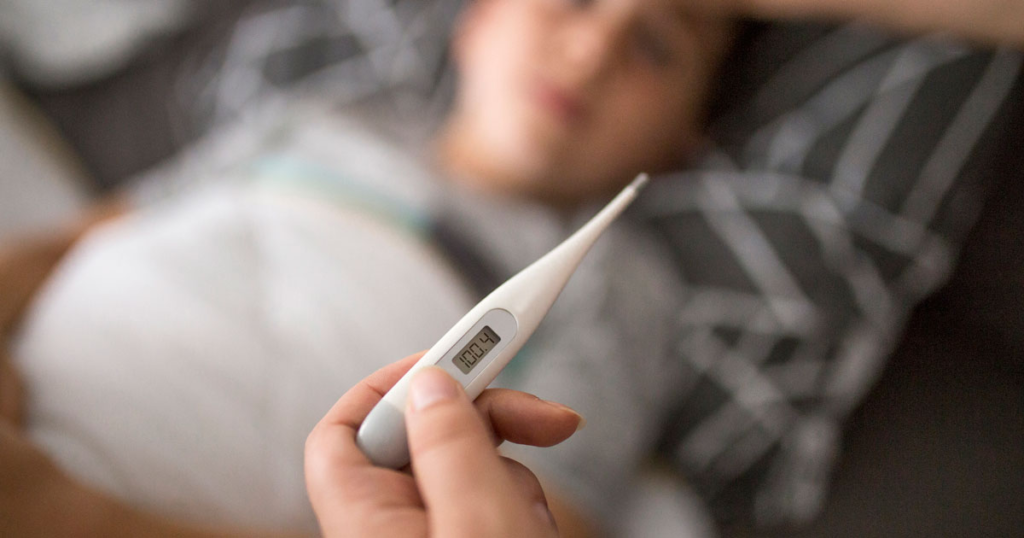When it comes to health, understanding fever is crucial. In this comprehensive guide, we will delve deep into the world of fever – when you should check for it, when you should worry, and what actions to take. By the end of this article, you’ll be well-equipped to handle fever-related situations confidently.
What is Fever?
Fever, medically known as pyrexia, is your body’s natural response to infections or other health issues. It’s characterized by an elevated body temperature above the normal range of 98.6°F (37°C).
When Should You Check for Fever?
Common Signs and Symptoms
Fever often accompanies various symptoms, such as:
- High Temperature: A primary indicator, body temperature above 100.4°F (38°C) is usually considered a fever;
- Chills and Sweating: Shivering and profuse sweating are common when your body’s temperature is rising or falling;
- Headache and Muscle Aches: These are frequently associated with fever, especially in viral infections like the flu.
When to Check Your Temperature
You should check for fever when you or someone you care for displays any of these signs and symptoms. It’s a crucial step in monitoring your health.
When Should You Worry About Fever?
High Fever in Adults and Children
High fever can be concerning, especially in:
- Children: A temperature of 104°F (40°C) or higher in children should prompt immediate medical attention;
- Adults: A sustained fever above 103°F (39.4°C) warrants a doctor’s visit.
Fever Lasting More Than 3 Days
If a fever persists for more than three days, consult a healthcare professional. It might be a sign of an underlying issue.

What to Do When You Have a Fever?
Stay Hydrated
Drinking plenty of fluids helps cool your body and prevent dehydration. Water, herbal tea, and clear broths are good choices.
Rest and Monitor
Take time off to rest, and keep an eye on your temperature. Use a reliable thermometer for accurate readings.
Over-the-Counter Medications
You can consider over-the-counter fever-reducing medications like acetaminophen or ibuprofen. However, consult a healthcare provider, especially for children and those with underlying health conditions.
Seek Medical Advice
If your fever is exceptionally high, doesn’t respond to medication, or is accompanied by severe symptoms like difficulty breathing, seek immediate medical attention.
Preventing Fever
Vaccinations
Vaccines play a vital role in preventing fever-causing infections. Stay up-to-date on recommended vaccinations.
Good Hygiene
Practicing good hygiene, such as regular handwashing, can help prevent infections that lead to fever.
Different Types of Fever
When it comes to fever, not all fevers are the same. There are various types, each with its unique characteristics and causes. Here’s a breakdown:
Low-Grade Fever
- Temperature Range: Slightly above normal, around 100.4°F (38°C);
- Common Causes: Mild infections, inflammatory conditions, or a response to medications.
Intermittent Fever
- Temperature Pattern: Fever comes and goes at regular intervals;
- Common Causes: Malaria, certain infections, and some autoimmune diseases.
Continuous Fever
- Temperature Pattern: Fever remains constant without significant fluctuations;
- Common Causes: Bacterial infections like urinary tract infections (UTIs) or pneumonia.
Remittent Fever
- Temperature Pattern: Fever fluctuates throughout the day but doesn’t return to normal;
- Common Causes: Respiratory infections, such as the common cold.
Hectic Fever
- Temperature Pattern: Rapid and irregular temperature spikes;
- Common Causes: Serious infections, septicemia, or inflammatory conditions.
Types of Fever
| Type of Fever | Temperature Pattern | Common Causes |
|---|---|---|
| Low-Grade Fever | Slightly elevated | Mild infections, inflammation, meds |
| Intermittent Fever | Comes and goes | Malaria, infections, autoimmune |
| Continuous Fever | Remains constant | Bacterial infections like UTIs, pneumonia |
| Remittent Fever | Fluctuates throughout | Respiratory infections, common cold |
| Hectic Fever | Rapid and irregular spikes | Serious infections, septicemia, inflammation |
Fever in Children
Fever in children can be especially concerning for parents. It’s important to understand how to handle fever in the younger ones. Here are some essential points to consider:
Fever Management for Children
- Medication: Always follow the dosage instructions for over-the-counter fever-reducing medications. Consult a pediatrician for proper guidance;
- Hydration: Ensure your child stays well-hydrated with water, clear fluids, or oral rehydration solutions;
- Comfort: Keep your child comfortable with light clothing and a cool room;
- Rest: Encourage your child to rest, as adequate sleep aids in recovery.
When to Seek Medical Attention
- High Fever: In children, a fever above 104°F (40°C) is a medical emergency and requires immediate attention;
- Seizures: If your child experiences a febrile seizure, seek medical help right away;
- Persistent Fever: If a fever persists for more than a couple of days or is accompanied by severe symptoms, consult a pediatrician.

Natural Remedies for Fever
While medication is often necessary to manage fever, there are also natural remedies that can help alleviate symptoms:
Herbal Teas
- Teas made from herbs like chamomile or ginger can help reduce fever and soothe discomfort.
Cold Compresses
- Applying a cold compress to the forehead or wrists can provide relief from fever-related discomfort.
Rest and Hydration
- Adequate rest and staying hydrated are among the most effective natural remedies for fever.
Fever-Reducing Foods
- Foods like chicken soup, popsicles, and fruits can help provide essential nutrients and hydration during a fever.
Natural Remedies for Fever
| Remedy | Description |
|---|---|
| Herbal Teas | Chamomile or ginger tea for relief |
| Cold Compresses | Apply to the forehead or wrists |
| Rest and Hydration | Essential for recovery |
| Fever-Reducing Foods | Nutrient-rich options like soup, fruits |
When to Consult a Healthcare Professional
Understanding when to seek medical attention for fever is crucial. Here are some instances where it’s essential to consult a healthcare professional:
Specific Populations
- Infants: Any fever in infants younger than 3 months is a medical emergency;
- Elderly: Fever in the elderly can be a sign of a severe infection, especially if accompanied by confusion.
Underlying Medical Conditions
- If you have underlying medical conditions like diabetes, heart disease, or a weakened immune system, consult a healthcare provider promptly.
Unexplained Fever
- If you have a fever without an apparent cause, especially if it lasts for an extended period, medical evaluation is necessary.
By being aware of these scenarios and understanding when to consult a healthcare professional, you can ensure timely and appropriate care for fever-related concerns.
Conclusion
Understanding fever is essential for maintaining good health. Knowing when to check for it, when to worry, and what to do can make a significant difference in your well-being. Remember to consult a healthcare professional when in doubt, and prioritize staying hydrated and getting enough rest.
FAQs
Stress and anxiety can elevate body temperature temporarily but typically don’t cause a full-blown fever.
Cold compresses on the forehead or the back of the neck can help reduce fever temporarily.
Fever is a regulated response to illness, while hyperthermia is an uncontrolled increase in body temperature, often due to external factors like heatstroke.
This old saying isn’t entirely accurate. Staying hydrated and eating nutritious food is essential regardless of the illness.
A persistent high fever, especially when accompanied by other severe symptoms, can be a sign of a serious underlying medical condition. It’s crucial to seek medical advice in such cases.
